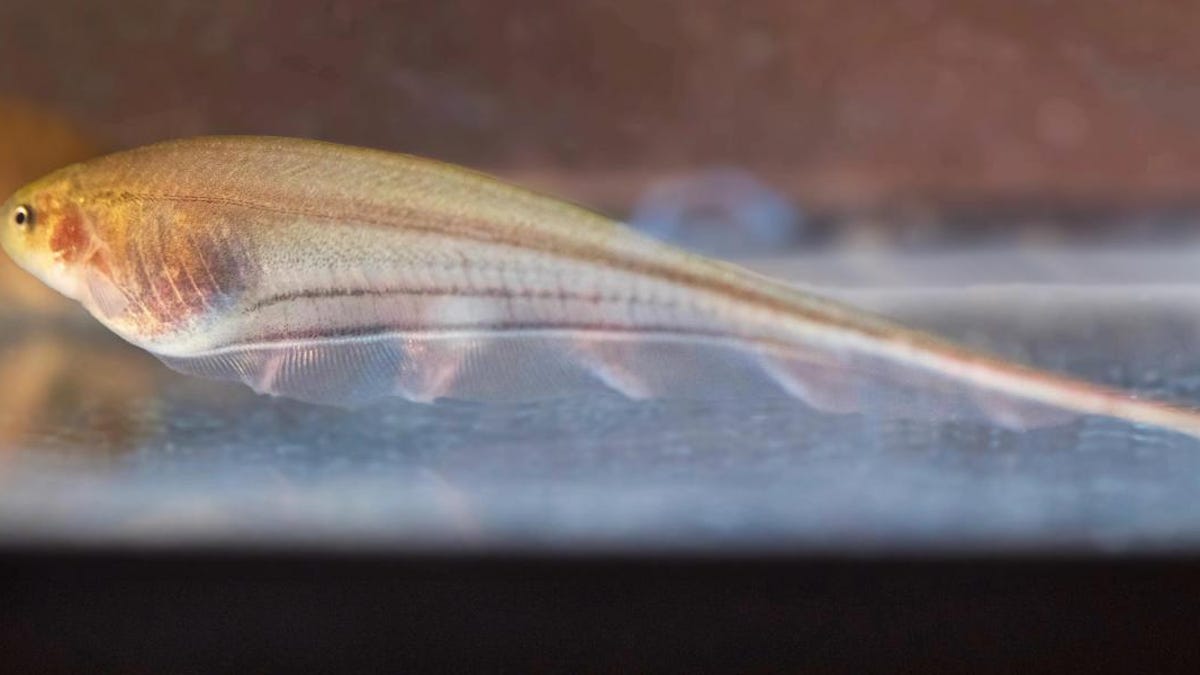Frankenfish brain-swap simulation offers electrifying results
Here's what a virtual reality electric glass knifefish can teach us about baseball and robots.

By simulating a brain transplant between two glass knifefish (Eigenmannia virescens), scientists glean better understanding of fine motor controls... and baseball.
If you've ever wondered how a very tall baseball player and a very short baseball player can both have similar competitive prowess -- or if you've ever wanted to swap two fishes' brains and see what happens -- a team of researchers have something exciting to show you.
In a recent study published in the journal eLife, researchers detail an experiment involving high-resolution cameras in fish tanks. They used those cameras to record large swathes of sensory data about the subtle micromovements of three weakly electric glass knifefish and their famous ribbon fins, as they zipped back and forth between hidden tunnel homes. After logging nearly 40,000 ribbon-fish movements per fish, the researchers created computer models of the brain and body of each fish.
But they didn't stop there.
The researchers then took data on each fish's information processing and motor systems and created a virtual version of that fish. Then, they swapped that virtual fish brain into the body of a different virtual fish. They tested the brain-swapped fish to see how they would react without any of the virtual body's sensory data and then with that virtual body's sensory data.
The goal? To find out how the fish behave when you alter the connection between sensory input and neural circuits. The question was whether the key to fine motor controls -- like those used for hitting a baseball, or sending a text -- lies in the nervous system's relationship to the brain, or whether it's our sensory input that makes a difference. The key for the Frankenfish researchers, it turns out, was getting the sensory feedback to the virtual fish.
When they gave brain-swapped virtual fishes their new virtual fish bodies' sensory feedback, the virtual fish went on just as though it had never had its brain swapped. But without the sensory feedback, the brain-swapped virtual fishes just couldn't adjust to having the wrong virtual brain in the wrong virtual body.
"What this study shows is the deep role of sensory feedback in everything we do," said the study's lead author Eric Fortune in a Monday release. "People have been trying to figure out how the animal movement works forever. It turns out that swapping brains of these fishes is a great way to address this fundamental question and gain a better understanding for how we might control our bodies."
Researchers said the Frankenfish experiment could help robotics engineers glean useful insight about sensor technology and the electric fish's ribbon fin could improve how we understand the complex muscle activations that allow humans to outperform robots when it comes to body movement control.

